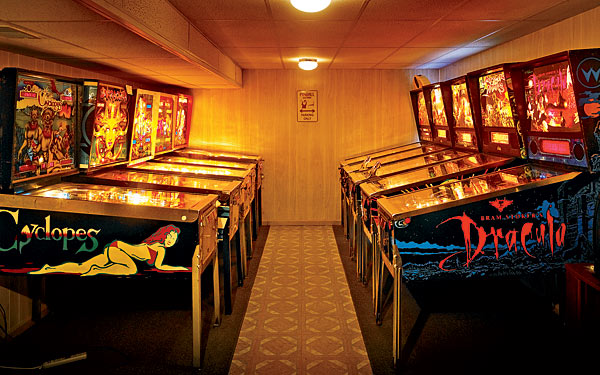
Roger Sharpe’s two sons, Joshua and Zachary, are ranked among the world’s top five pinball players, and, like their father, they collect vintage games, which they display in Joshua’s basement arcade.
It’s a surprising link with the city’s past—the pinball machine, the bumpers-and-flippers bar game that entertained generations of proto-slackers and inspired a rock opera, owes much of its history to Chicago. For most of the 20th century, North Side factories turned out the majority of the world’s machines, and today the last pinball manufacturer anywhere operates out of a building in Melrose Park. “Certainly we have to make a living,” says Gary Stern, the owner of Stern Pinball, “but we also have a purpose: to keep the art of pinball alive. If pinball disappears, the world will continue to exist, but a little bit of the American fabric of life would be gone.”
During the game’s heyday in the sixties and seventies, a handful of Chicago companies churned out dozens of new models a year. Most found their way into smoky bars and strip-mall arcades, where pinball fanatics obsessed over the competition and, in many instances, delighted in the machines themselves. Throughout that era, each game was designed with an original theme, such as Queen of Hearts and Grand Slam. Even today, when new games include digital bells and whistles and the themes are licensed from movies and video games, pinball machines are assembled by hand, with their own illuminated backglass and silk-screened “play fields.”
D. Gottlieb & Co., based on Addison Street near Ashland Avenue, was once considered the “Cadillac of pinball.” The company is no longer in business, but from the late forties through the age of bell-bottoms and disco, Gottlieb and a Chicago outfit called Williams Electronics Games had the lion’s share of the pinball market. Before World War II halted production, pinball machines were, to a large degree, games of chance: A player pulled back the plunger and then watched as the ball wove and bounced its way through a series of obstacles. In 1947, the late Harry Mabs, Gottlieb’s chief engineer, added the first flippers to the game board, allowing the player to participate and keeping the ball active longer.
The first flipper games had six flippers. The world has Steve Kordek to thank for the two-flipper phenomenon. Kordek, who is 98, was a veteran pinball designer as the 1948 gaming show approached. Working at a company called Genco and assigned the task of designing a new game on a tight budget, Kordek created a machine with only two flippers. “I put ’em on the bottom,” he says, “and that’s where they’ve been ever since.”
If you look hard enough, you can still spot a classic machine in a handful of Chicago’s neighborhood bars, such as the Empty Bottle in Ukrainian Village or the Beachwood Inn in Wicker Park. But the majority of the most collectible games wound up in the rec rooms of collectors all over the world. Roger Sharpe, 56, the managing editor of GQ magazine in the mid-seventies and now the world’s foremost pinball historian, has five antique games in his Arlington Heights home. His sons, Joshua and Zachary, have a dozen in Joshua’s Palatine basement, which resembles a speakeasy arcade.
Sharpe, a Chicago native, wrote the definitive book on the game, Pinball!, in 1977, and his sons are ranked among the top five players in the world. “The fact that pinball’s history is centralized in my hometown gives me an enormous amount of personal and civic pride,” says Sharpe. “We were able to entertain not only generations of people domestically but internationally, and it all coalesced in Chicago.”
Photography: Nathan Kirkman
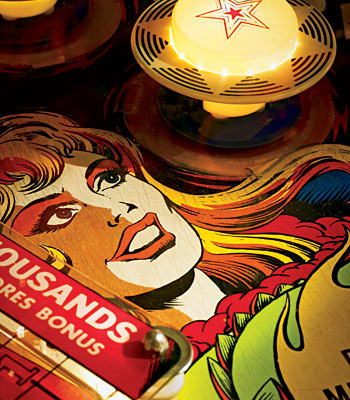
Dragon, a 1978 game from D. Gottlieb & Co.
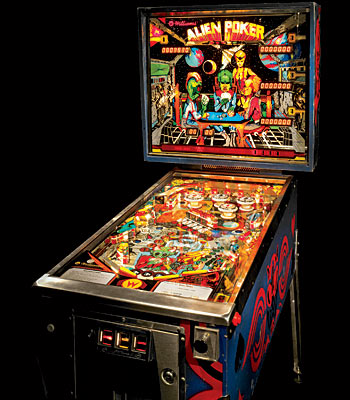
Flippers, buzzers, and bells: Alien Poker, a 1980 game from Williams Electronics Games
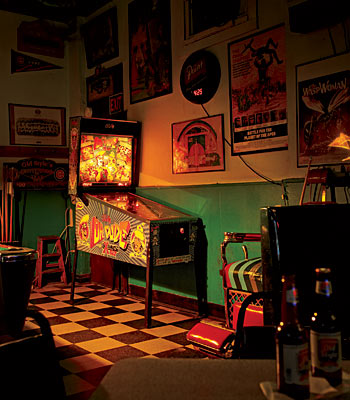
Dr. Dude, a 1990 game from Bally, sits alluringly inside Wicker Park’s Beachwood Inn.
Photography: Nathan Kirkman
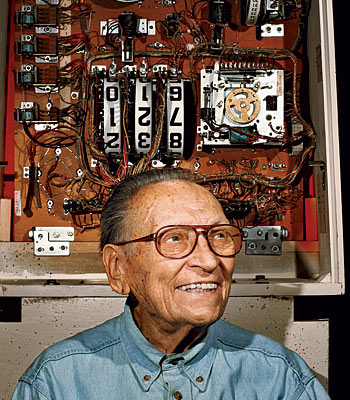
Steve Kordek, who gave the world two-flipper pinball, poses in front of the innards of a game he designed at Genco. “Chicago was the place where all the classic games were made,” says Kordek, “because you could acquire all the parts that were necessary from local manufacturers.”
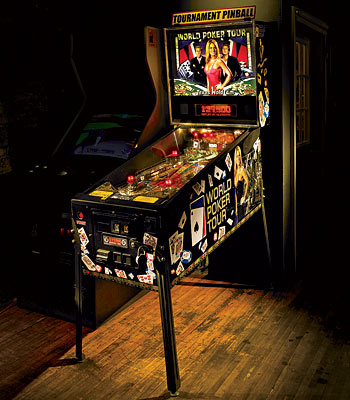
World Poker Tour, a 2006 game from Stern Pinball, awaits its next player inside the Empty Bottle in Ukrainian Village.
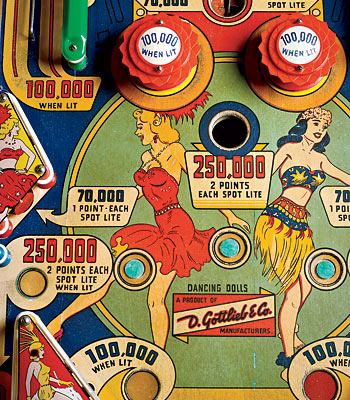
Two lurid lasses cavort across the “play field” of Gottlieb’s Dancing Dolls (1960).
Photography: Nathan Kirkman
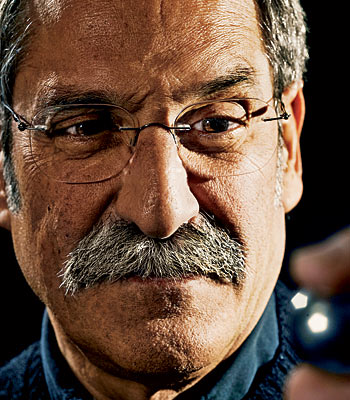
Roger Sharpe, a former managing editor at GQ magazine, is the author of Pinball! (1977). “My sole motivation to write my first story about pinball was simple,” he says. “I wanted to find out how I could buy a specific pinball machine for myself: Buckaroo Cow Poke.”
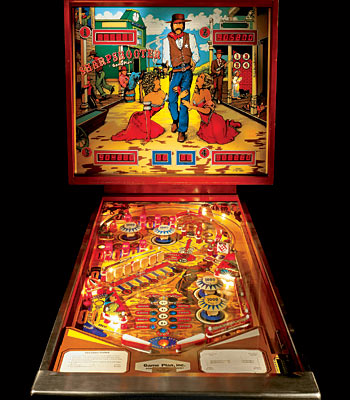
Sharpshooter, a 1979 game from Game Plan
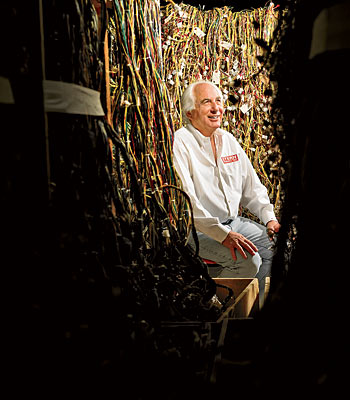
Gary Stern, the owner of Stern Pinball, sits among coils of electrical wire; a half-mile’s worth is stitched together inside each game. “I read that we have more man-hours in the assembly of a pinball machine than they did in the assembly of a car,” he says.
Photography: Nathan Kirkman
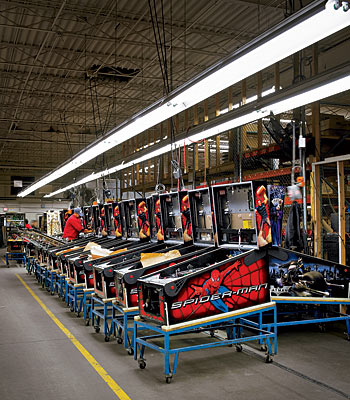
Stern’s Melrose Park company is the last manufacturer of the games.
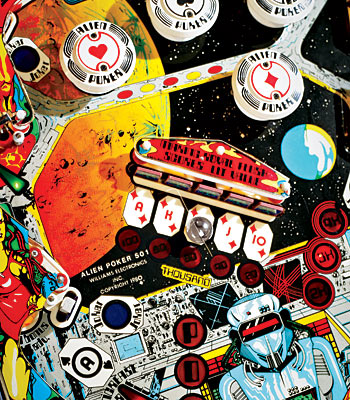
A close-up of the play field of Alien Poker
Photography: Nathan Kirkman


